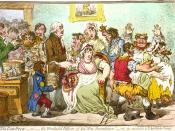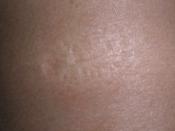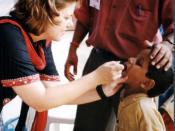Vaccination and how it prevents infection
Vaccination, or immunisation, is the process of making people resistant to infection caused by a pathogen. It involves the giving of an injection or an oral dose of a vaccine that produces immunity either actively or passively. Active immunisation involves the injection of an antigen in the form of a vaccine. The production of antibodies and T and B memory cells specific to that type or antigens are stimulated and remain in the body for a long period of time. Passive immunity is the injection of antibodies that another organism has produced in response to a particular pathogen. However this does not provide long-term immunity.
Disease Cause Vaccination
Small Pox Variola virus Small pox vaccine is no longer made or registered for use in Australia. Commercial production of Small Pox vaccine in the world ceased more than 20 years ago. Edward Jenner discovered the Small Pox vaccine, which was the first vaccine ever developed.
This vaccination eradicated Small pox in Australia
Diphtheria A toxigenic strain of the bacteria Corynebacterium diphtheriae Diphtheria vaccines provide effective protection against the disease by stimulating the production of antibodies against the Diphtherial toxin. In Australia, Diphtheria vaccine in the form of DTP (a combined diphtheria, tetanus and pertussis vaccine) at 2, 4, 6 and 18 months of age, and at 4 to 5 years of age. In 1990, World Health organisation stated that 80% of children had been vaccinated against this disease.
Polio An Enterovirus known as the poliovirus. Polio caused thousands of children to become paralyzed every year. The polio vaccine was introduced in 1955. It causes active immunisation and it is an oral vaccine. Worldwide, the number of cases is down by 80%. Polio was eradicated, as no cases of polio have been reported in Australia since...


